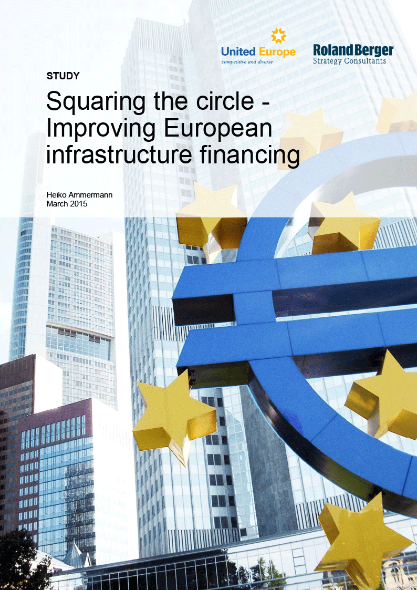Squaring the circle - improving European infrastructure financing
![{[downloads[language].preview]}](https://www.rolandberger.com/publications/publication_image/roland_berger_infrastructure_finance_20150320_1_download_preview.png)
Improving European infrastructure financing


Investment in infrastructure is key to making Europe more competitive, yet public sector investment has been falling in the wake of the sovereign debt crisis—and even as Europe’s capital markets are experiencing historically high levels of liquidity, private sector investment remains obstinately low. Especially considering that the International Monetary Fund (IMF) recently calculated that a 1% increase in investment could yield up to a 1.5% increase in economic growth over a four year period, Europe needs considerable capital—an estimated 1 trillion euros over the coming three years—put into roads, railroads, airports, electricity grids, telecommunications networks, and broadband connections to reverse the trend in public underinvestment that is becoming all too visible in EU member states international ranking numbers. What Europe needs is more private investors who can put their capital into infrastructure, but what can be done to make European infrastructure a more attractive investment opportunity?
In this study, we look at exactly where the biggest obstacles to financing European infrastructure projects lie. Once the issues are clearly laid out, we guide you through our hands-on recommendations for a comprehensive European investment model that aims to support the successful realization of the European Fund for Strategic Investments (EFSI). We examine how factors such as misaligned risk structures and expected yields, regulatory factors, and the number of available standardized projects can be handled more effectively in the context of the EFSI. We look at how the EFSI works, what the money will be spent on, and how it will be managed.

The heart of the “Investment Plan for Europe” initiative proposed by Jean-Claude Juncker, EFSI seeks to balance a current market environment characterized by uncertainty and low confidence with initial risk-bearing capacity to mobilize private investment and channel liquidity into viable infrastructure projects. We round out this in-depth look into infrastructure investment with six key elements we believe can address the current barriers in a holistic and systematic fashion—a plan we offer not as a rigid blueprint for implementation, but rather a contribution to an inspiring, open discussion.

![{[downloads[language].preview]}](https://www.rolandberger.com/publications/publication_image/roland_berger_infrastructure_finance_20150320_1_download_preview.png)
Improving European infrastructure financing